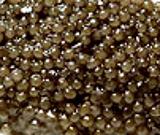 [Spoonbill; Polyodon spathula (American) |
Psephurus gladius (Chinese)]
[Spoonbill; Polyodon spathula (American) |
Psephurus gladius (Chinese)]
American paddlefish are native to the Mississippi / Missouri / Ohio drainage basin north of Arkansas. They can grow to over 7 feet and 200 pounds but are commonly 48 inches long. They have recently been found in the Danube, probably escaped from fish farms during floods, and have been seen in restaurant holding tanks in southern China. Chinese paddlefish were native to rivers in northern China and grew to nearly 10 feet and 660 pounds. They are now thought extinct due to dam building, pollution and over harvesting. The American paddlefish is IUCN rated VU (Vulnerable) but are still allowed as a sports fish in many locations. Photo by Olga Sitnik distributed under license Creative Commons Attribution Share-Alike v3.0 Unported.
While still fairly common, the American Paddlefish is under serious pressure from poachers due to a criminal market for it's caviar. This caviar is shipped to Russia and reshipped by Russian crime syndicates mislabeled as Russian Caviar. Unfortunately, the Russians learned everything they know about Capitalism from B grade gangster flicks. In 2013 more than 100 people were rounded up and arrested or given federal citations for participating in a paddlefish poaching ring.
Unlike their cousins, the Sturgeons, Paddlefish are plankton eaters, cruising around with their big mouths open to scoop up microscopic and near microscopic prey. Electrical sensors on their paddle alert them to the presence of prey. They are now extinct in Lake Erie and its drainages and cannot be restored there because of the invasive zebra mussels. These are also filter feeders and keep the water too cleaned of plankton for paddlefish to have enough to eat. Unfortunately the equally invasive round gobies aren't eating enough zebra mussels to clear them out.
 This fish is related to the sturgeon, and produces Caviar that is quite
similar, and is allowed by U.S. regulations to be labeled as Caviar. It
is a bit smaller than Sturgeon caviar, smoother in texture, and the eggs
have a bit less "pop". Color varies from steel gray to brownish gray.
Given the high price of sturgeon caviar, there is considerable interest
in farming this fish, both for meat and eggs, but also "ranching" them
(stocking reservoirs where they feed themselves). Paddlefish caviar
sells on-line for around 2016 US $24 per ounce, plus overnight shipping.
This fish is related to the sturgeon, and produces Caviar that is quite
similar, and is allowed by U.S. regulations to be labeled as Caviar. It
is a bit smaller than Sturgeon caviar, smoother in texture, and the eggs
have a bit less "pop". Color varies from steel gray to brownish gray.
Given the high price of sturgeon caviar, there is considerable interest
in farming this fish, both for meat and eggs, but also "ranching" them
(stocking reservoirs where they feed themselves). Paddlefish caviar
sells on-line for around 2016 US $24 per ounce, plus overnight shipping.
More on Varieties of Fish (very large page).
sf_sturfz 130921 - www.clovegarden.com